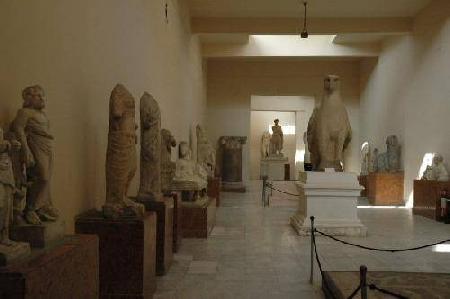Located in the Horreyya Road, near the city center, the Greco-Roman Museum of Alexandria was established in 1892. It was officially opened on 17 October 1892 by Khedive Abbas Helmy the Second. Giuseppe Botti, an Italian, had undertaken the task of creating a museum in Alexandria dedicated to the Greco-Roman Period. The beautiful building of the museum is has a neo-classical facade of six columns and pediment bearing the large Greek inscription 'MOYXEION'. Before the building, there is an ever green garden that comprises an open museum.
 Displayed at the 27 halls of the museum is a vast collection of fascinating finds, classical statues, mummies, coins, coffins, and sarcophagi from the city and its environs. The museum's exhibits mostly date back from the third century BC to the third century AD. Some of the Greco-Roman artifacts were obtained from the Egyptian Museum in Cairo such as the coin collection. Other artifacts were obtained from excavations in the Fayium region.
Displayed at the 27 halls of the museum is a vast collection of fascinating finds, classical statues, mummies, coins, coffins, and sarcophagi from the city and its environs. The museum's exhibits mostly date back from the third century BC to the third century AD. Some of the Greco-Roman artifacts were obtained from the Egyptian Museum in Cairo such as the coin collection. Other artifacts were obtained from excavations in the Fayium region.

